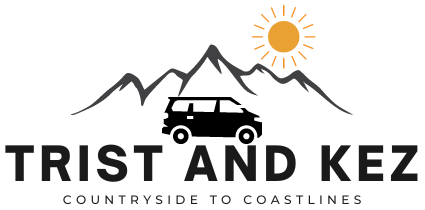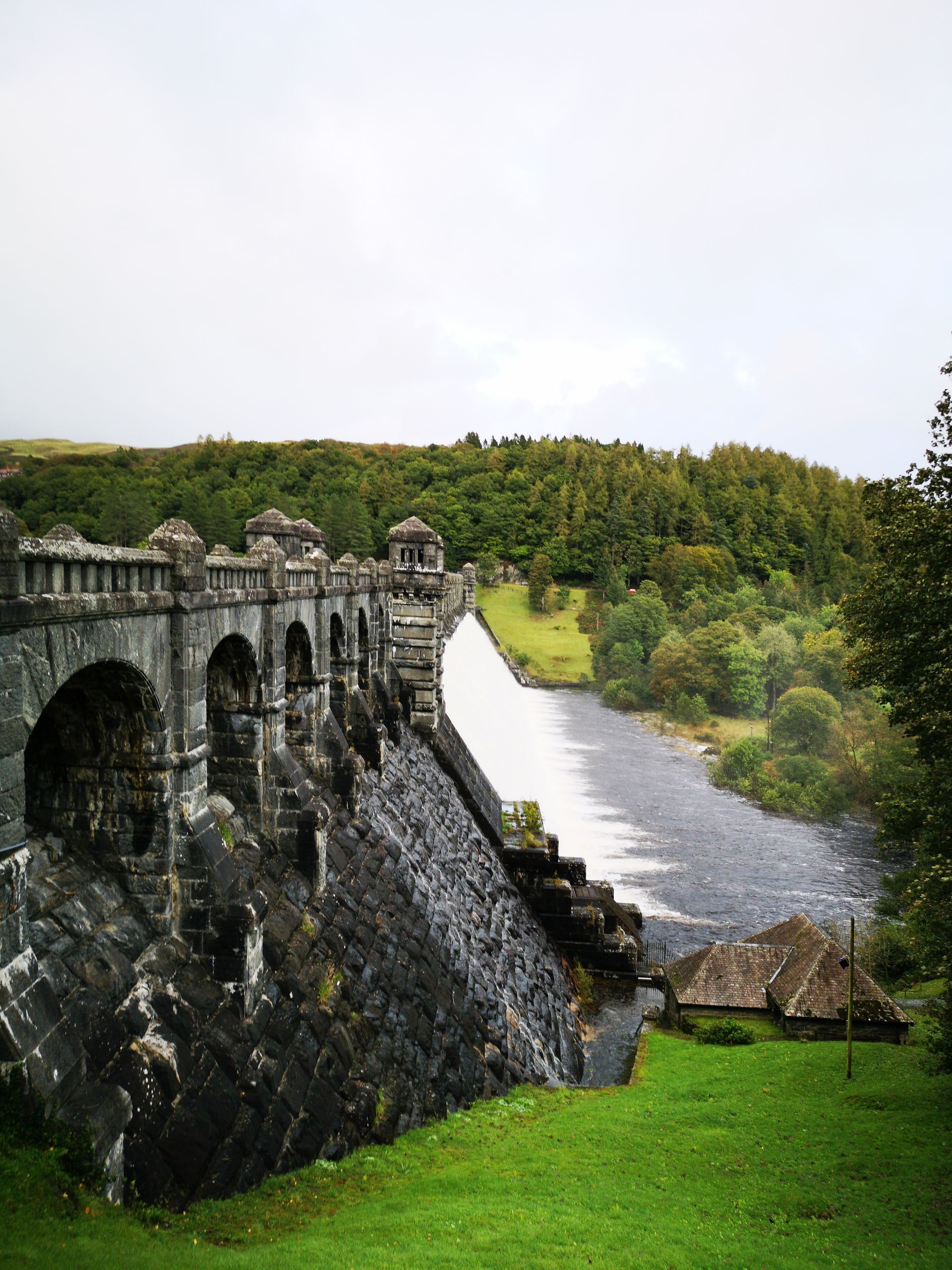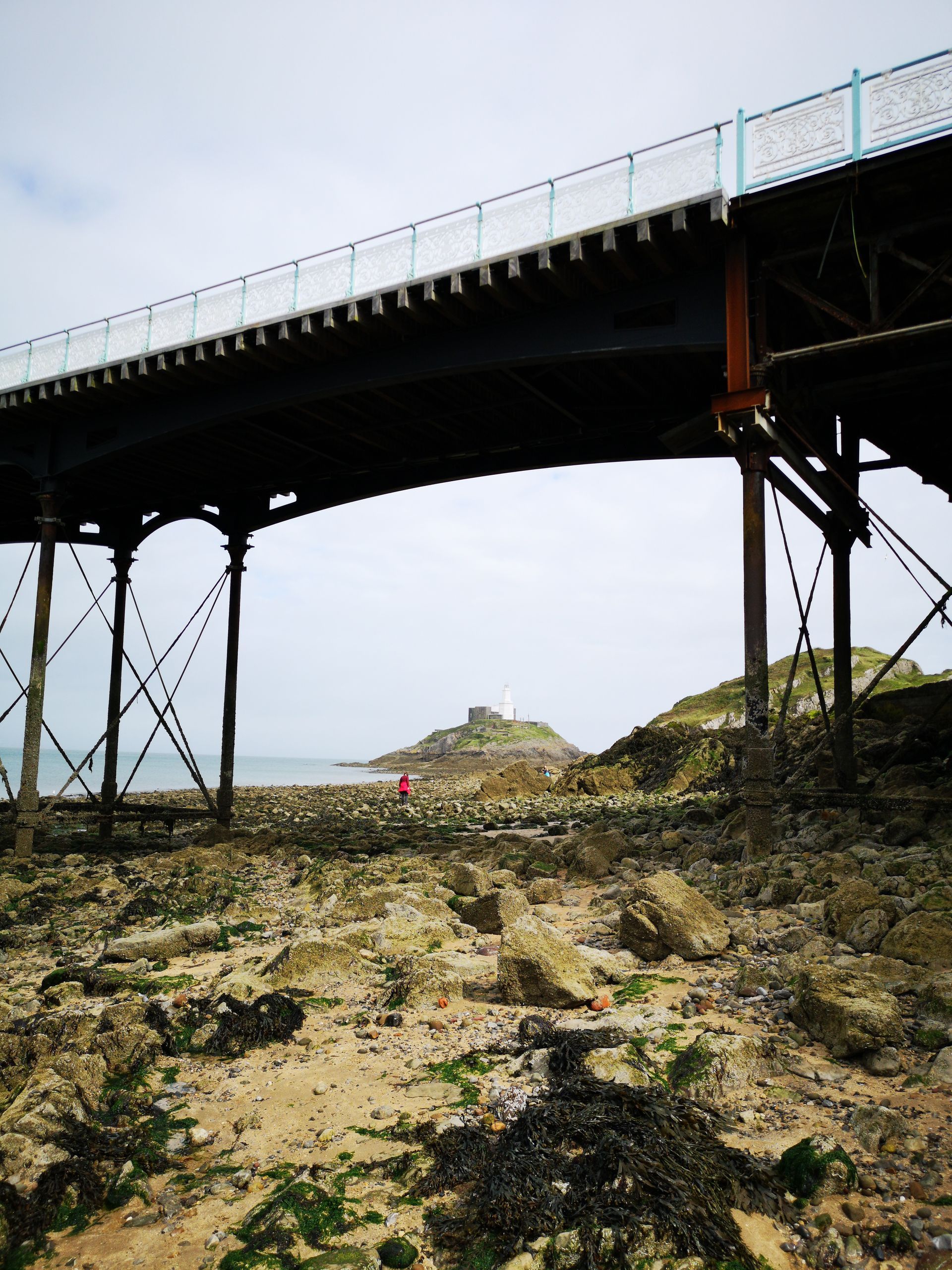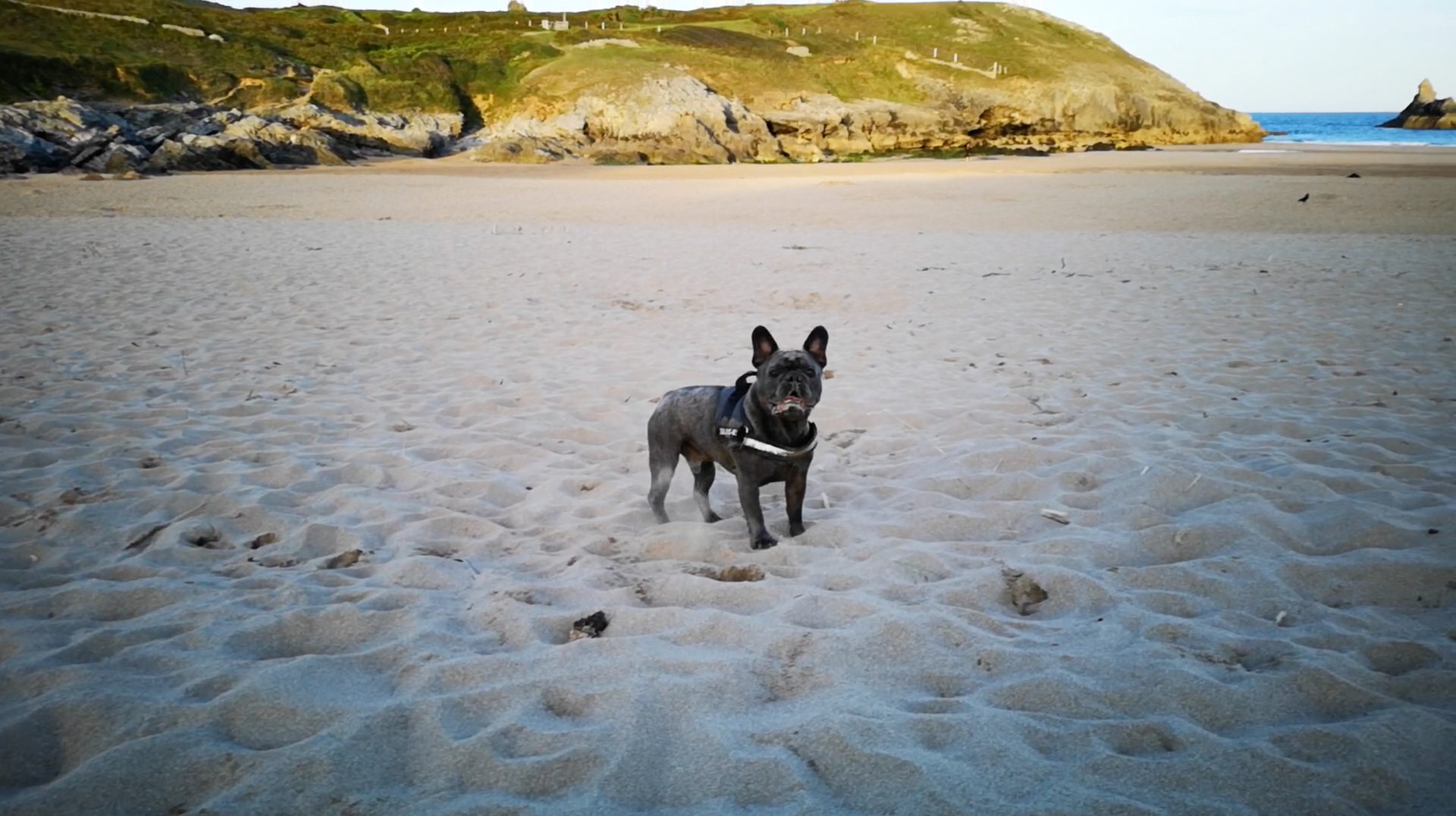Kidwelly Castle, Carmarthenshire Wales A Complete Guide
Kidwelly Castle is a must-see if you are in Carmarthenshire, southwest Wales. It’s a great place to visit by yourself or with your family. The grounds are open and easy to navigate around the castle.
The castle is steeped in history and plenty of signs and audio to take you through its mixed history. We spent around 1 hour and 30 mins walking around the different levels of the castle. You could walk around the castle in less time, or even take time relaxing around the grounds and spend even longer. As we took Frank our French Bulldog I had to take the upper levels alone as dogs are allowed in but not above the ground floor. The sights from the upper levels are awesome. You get a full 360-degree view of the area.
Walking through the kitchens, bedrooms and dungeons gives you a real sense of Medieval times. If you want to take a break while exploring the castle you can take a seat and bring a picnic on the benches provided. Then head back off exploring.
Did you know that Monty Python, Holy Grail’s first scene was filmed at Kidwelly Castle? Your ticket for the castle is a day pass so you can come and go as much as you like for the day.
Well if that’s not enough for you. We’ve created this guide for you to help you with your visit to Kidwelly Castle.
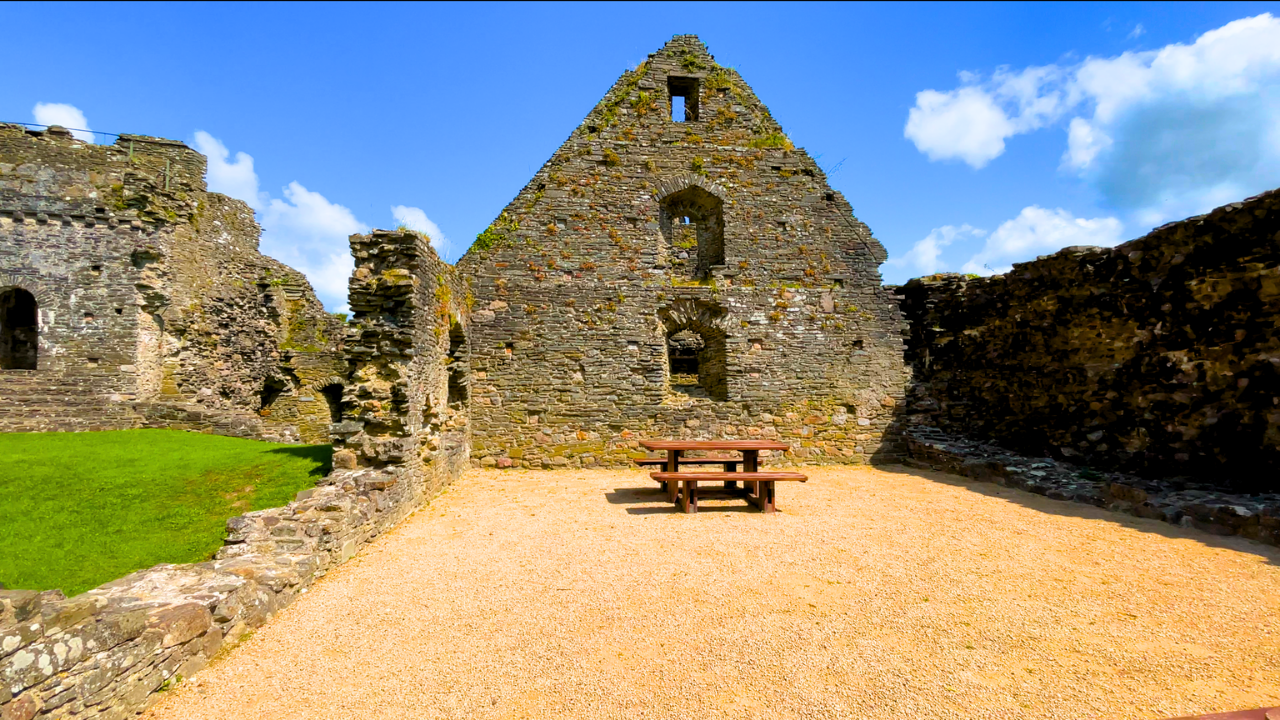
- What features does Kidwelly Castle have?
- What are the facts about Kidwelly Castle?
- Who lived in Kidwelly Castle?
- Are dogs allowed in Kidwelly Castle?
- Shopping and Local Amenities
- Exploring Nearby Attractions
- Are There Toilets At Kidwelly Castle
- What To Pack for Kidwelly Castle
- Where To Stay near Kidwelly Castle
- Camping near Kidwelly Castle
- Kidwelly Castle TV and Film Location
Where is Kidwelly Castle in Wales?
Kidwelly Castle is located in the town of Kidwelly, which is in Carmarthenshire, Wales. The town of Kidwelly is situated on the south-western coast of Wales, near the estuary of the River Gwendraeth. The castle itself is positioned on a hill overlooking the town and the surrounding landscape. Its strategic location near the river and coast made it an important defensive stronghold during the medieval period. Today, Kidwelly Castle is a popular tourist destination and a significant historical site in Wales, attracting visitors from all over the world to explore its rich history and impressive architecture.
History of Kidwelly Castle
The history of Kidwelly Castle has a mixed past and is rich in history and spans over nine centuries. Here's a brief run through its historical timeline:
- 1106-1136: Kidwelly Castle was constructed by the Normans around 1106 under the orders of Roger de Camville, a Norman lord. It was built as a defensive stronghold during the Norman invasion and settlement of Wales. The castle's strategic location near the River Gwendraeth estuary allowed it to control access to the sea and nearby lands.
- 1136-1283:
Over the years, Kidwelly Castle changed hands several times due to conflicts between the Welsh and the English. It was captured by the Welsh forces in 1136 during the Owain Gwynedd's uprising against the Normans, but it was later retaken by the English.
- Late 13th century:
In the late 13th century, Kidwelly Castle came under the control of the powerful de Chaworth family through marriage. The de Chaworths made significant modifications and improvements to the castle's defences.
- 1283-14th century: In the late 13th century, King Edward I of England invaded Wales and launched a campaign to strengthen and expand the castle's fortifications as part of his efforts to control the region. The castle was heavily reinforced with stone walls and towers, transforming it into a formidable stronghold.
- 15th century: Kidwelly Castle continued to play a role in various conflicts, including the Welsh rebellion under Owain Glyndŵr in the early 15th century. Later, during the Wars of the Roses, the castle changed hands between the Lancastrians and the Yorkists.
- 16th-17th century: By the 16th century, Kidwelly Castle's military importance declined, and it became more of a residence for various officials. In the 17th century, during the English Civil War, the castle was abandoned and fell into disrepair.
- 20th century: In the 20th century, the castle underwent restoration and preservation efforts, which have allowed it to survive as a significant historical landmark to this day.
Today, Kidwelly Castle is managed by Cadw, the Welsh Government's historic environment service, and is open to the public as a tourist attraction and historical site. It stands as a testament to Wales' medieval past and remains a fascinating destination for history enthusiasts and visitors alike.
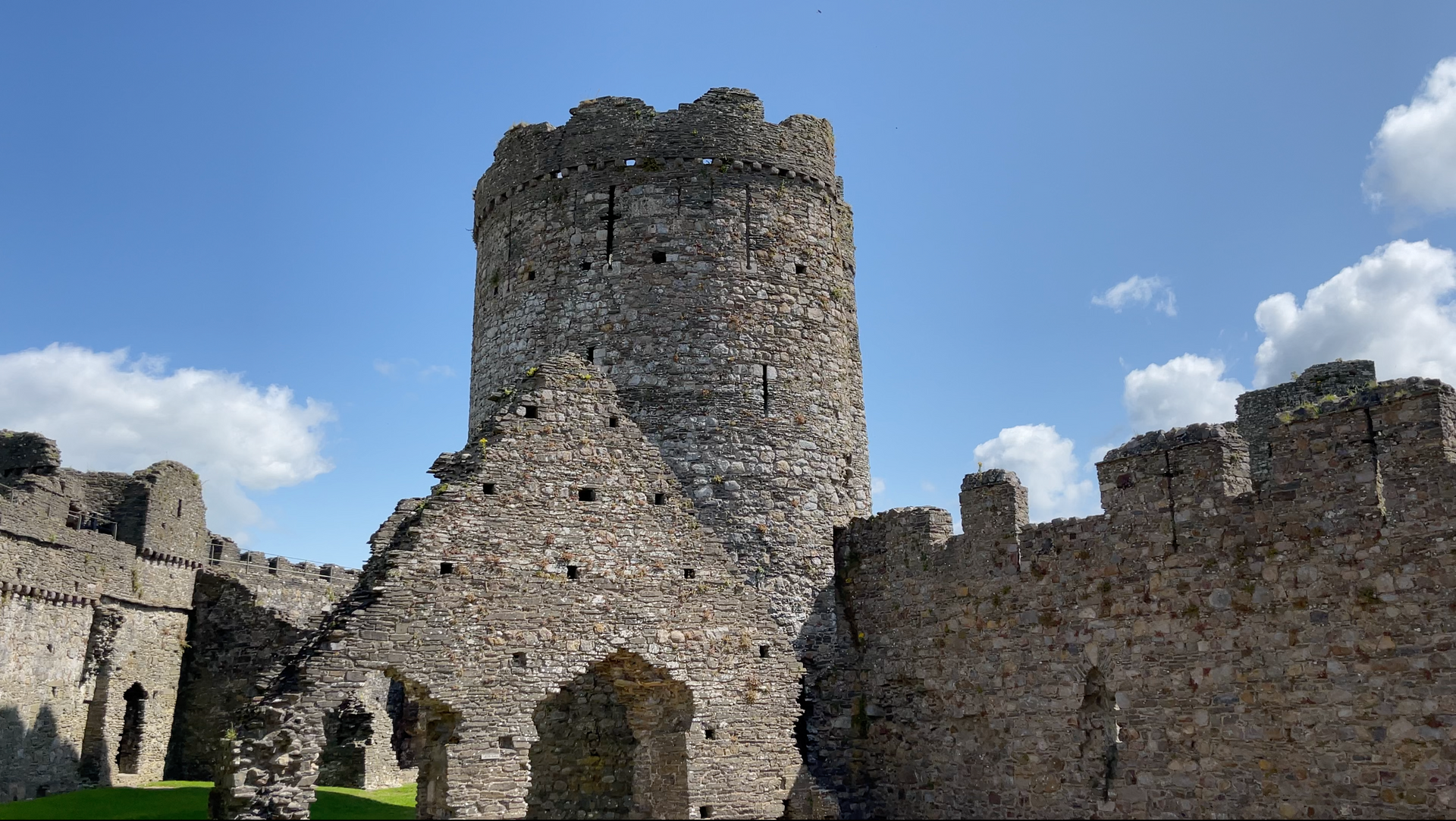
How to get to Kidwelly Castle
To get to Kidwelly Castle, you can use various transportation methods depending on your starting location. Here are some common ways to reach Kidwelly Castle:
- By Car: Kidwelly is accessible by car via major roadways. If you are coming from the M4 motorway, take the A484 towards Kidwelly. Once you reach the town, follow signs to the castle. There are parking facilities available near the castle for visitors.
- By Train: Kidwelly has its own railway station, which is on the West Wales Line. You can take a train to Kidwelly from nearby towns and cities like Swansea or Carmarthen. From the railway station, it is a short walk to the castle.
- By Bus: There are bus services that connect Kidwelly to nearby towns and cities. You can check local bus schedules to find routes that pass through Kidwelly.
- By Bicycle: Kidwelly is accessible by bicycle, and the surrounding area offers scenic cycling routes.
- On Foot: If you are staying in the town of Kidwelly or nearby, you can reach the castle on foot. The castle is located close to the town centre, and it is a pleasant walk to reach the site.
Once you arrive at Kidwelly Castle, you can purchase tickets at the entrance and begin your exploration of this fascinating historical site. The castle is open to the public, and guided tours may be available depending on the season and staffing. It's always a good idea to check the opening hours and any additional visitor information on the official website before your visit.
Kidwelly Castle Entrance Fee
Do you have to pay to get into Kidwelly Castle? Yes, you have to pay to enter Kidwelly Castle. The cost of entry is £6.80 per adult. The other prices are as follows"
- Member - Join now Free
- Adult £6.80 Family
- £22.10 Disabled person and companion
- Free Juniors (Aged 5-17) / Students £4.80
- Seniors (Aged 65+) £6.30
Kidwelly Castle Opening Times
Kidwelly Castle opening times vary depending on the time of year you visit. We've outlined the different opening hours throughout the year.
- Daily 9.30 am–5 pm
- Last admission 30 minutes before closing
- Daily 9.30 am–6 pm
- Last admission 30 minutes before closing
- Daily 9.30 am–5 pm
- Last admission 30 minutes before closing
- Daily 10 am–4 pm
- Last admission 30 minutes before closing
- Closed 24, 25, 26 December and 1 January
Best Time to Visit Kidwelly Castle
We visited at the start of the summer holidays. In all honesty, the weather hadn’t been great in the lead-up to our visit and this may have made it quieter than usual. We also visited early in the day around 10:30 am. After we arrived the castle started to get busier.
The best time to visit Kidwelly Castle depends on your preferences for weather, crowds, and events. Here are some considerations for each season:
- Spring (March to May):
Spring can be a lovely time to visit Kidwelly Castle, as the weather starts to warm up, and the surrounding countryside comes to life with colourful blooms. The castle grounds are likely to be less crowded compared to the peak summer season, making it a pleasant time for exploration.
- Summer (June to August):
The summer months are the busiest time for tourism in Wales, including Kidwelly. The weather is generally warmer, making it ideal for outdoor activities and exploring the castle. However, be prepared for larger crowds, especially during school holidays and weekends
- Autumn (September to November):
Autumn can be a delightful time to visit, with milder temperatures and beautiful foliage surrounding the castle. The crowds may be thinner compared to summer, allowing for a more peaceful experience.
- Winter (December to February):
Winter is the quietest time for tourism in Kidwelly Castle. While the weather can be colder and wetter, visiting during this season can provide a more serene and atmospheric experience. However, keep in mind that some areas of the castle may have restricted access or reduced opening hours during winter.
Where to Park at Kidwelly Castle
When visiting Kidwelly Castle, there are parking options available for visitors. Here's where you can park your car:
Kidwelly Castle Car Park:
The castle has its own dedicated car park, conveniently located near the castle entrance. This car park is typically the most convenient option for visitors, as it provides easy access to the castle grounds.
Station Road Car Park:
This car park is in the heart of the town. It's a few minutes to walk to the castle from here. Check out the
Google Maps link.
Glan-Yr-Afon Car Park: This is the closest car park outside of the castle car park. It's currently free and has plenty of space. If you have a campervan or motorhome it's recommended that you park here for ease. Check out the Google Maps link.
What is Kidwelly Castle famous for?
Kidwelly Castle is famous for being one of the best-preserved medieval castles in Wales. Located in the town of Kidwelly in Carmarthenshire, Wales, the castle has a rich history dating back to the early 12th century. Here are some of the reasons why Kidwelly Castle is renowned:
Historic Significance: The castle was constructed by the Normans in the early 1100s and played a significant role in the struggles between the Welsh and the English during the medieval period.
Architectural Marvel: Kidwelly Castle is an impressive example of medieval military architecture. It features sturdy defensive walls, towers, and a massive gatehouse, showcasing the military engineering of the time.
Well-preserved Structure:
Unlike many other castles, Kidwelly has been remarkably well-preserved over the centuries, giving visitors a glimpse into medieval life and architecture.
Cultural Heritage: The castle has been recognised as a Grade I listed building, indicating its cultural importance and architectural significance.
Scenic Location:
Situated near the estuary of the River Gwendraeth, Kidwelly Castle offers beautiful views and is a popular destination for tourists and history enthusiasts.
Tourist Attraction:
Today, Kidwelly Castle is managed by Cadw, the Welsh Government's historic environment service, and is open to the public as a tourist attraction and heritage site. Visitors can explore the castle's grounds, climb its towers, and learn about its history through exhibitions and guided tours.
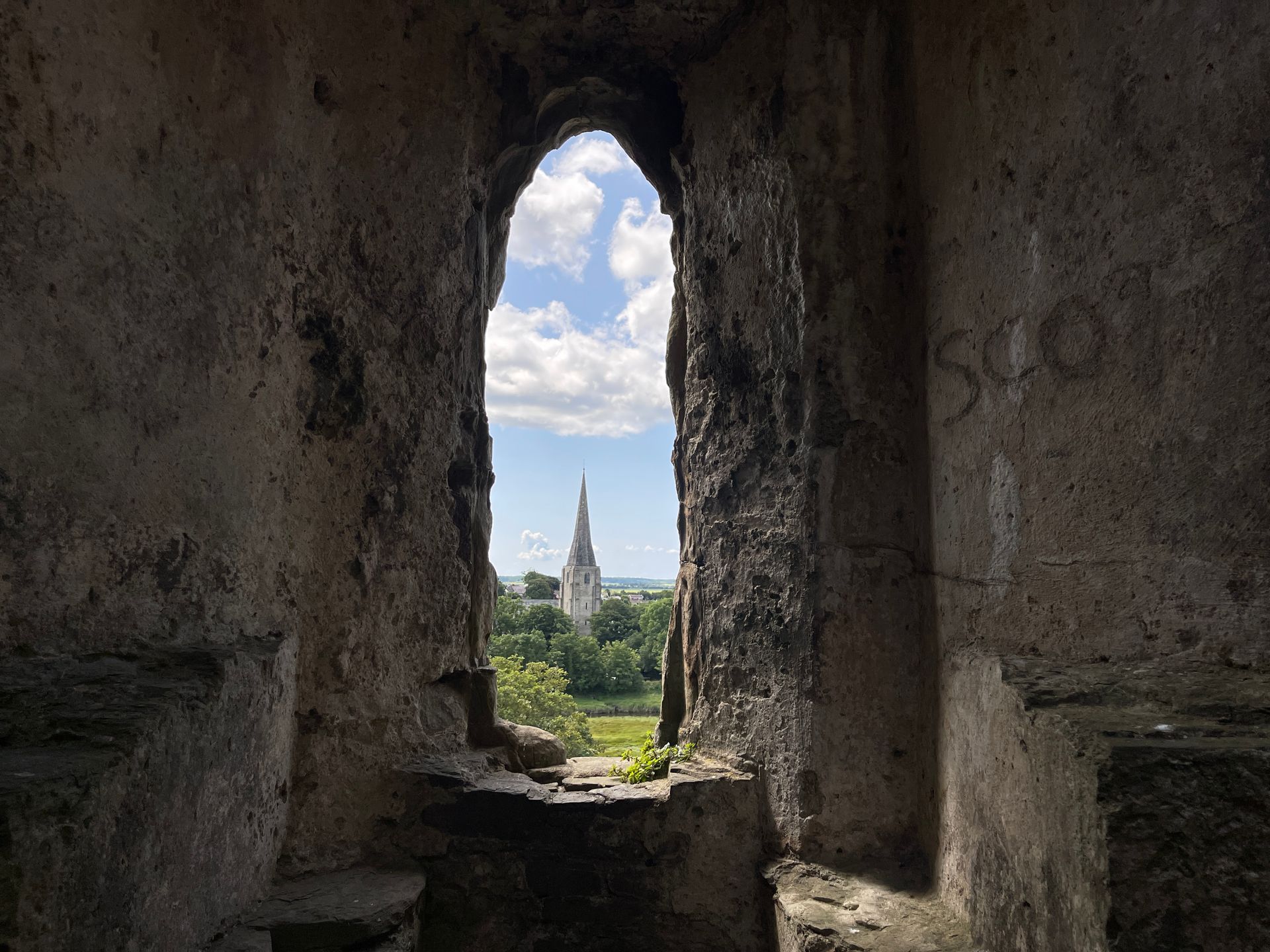
How old is Kidwelly Castle?
Kidwelly Castle is approximately 900 years old. It was built by the Normans in the early 1100s, with construction starting around 1106 and completed around 1136.
What features does Kidwelly Castle have?
Kidwelly Castle is a well-preserved medieval fortress with several notable features that reflect its historical significance and architectural prowess. Some of its key features include:
Curtain Walls: The castle is surrounded by thick curtain walls made of stone, providing a defensive perimeter for the entire complex.
Gatehouse: Kidwelly's massive gatehouse is one of its most impressive features. It served as the main entrance to the castle and was designed to be heavily fortified, with portcullises, murder holes, and arrow slits to defend against attackers.
Towers: The castle boasts several towers, including the Great Gatehouse Tower, the South-West Tower, and the Inner West Tower. These towers served as lookout points and added strength to the castle's defences.
Inner Courtyard: Inside the castle walls, there is an inner courtyard, which would have contained various buildings such as living quarters, a great hall, and storage areas.
Chapel: Kidwelly Castle includes a small chapel, dedicated to St. Mary. This chapel served the spiritual needs of the castle's inhabitants during the medieval period.
Barbican: In front of the main gatehouse, there is a barbican, which is a fortified outpost designed to further protect the castle entrance.
River Gwendraeth Estuary: The castle is strategically located near the River Gwendraeth estuary, providing access to the sea and enhancing its defensive capabilities.
Machicolations: These are projecting stone structures at the tops of walls and towers, equipped with openings through which defenders could drop stones or other objects onto attackers below.
Drawbridge: The main entrance was likely accessed via a drawbridge that could be raised or lowered as needed for defence.
Defensive Ditches: Kidwelly Castle had protective ditches surrounding the curtain walls, adding another layer of defence against potential attackers.

What are the facts about Kidwelly Castle?
Here are some interesting facts about Kidwelly Castle:
Norman Construction: Kidwelly Castle was built by the Normans in the early 12th century, starting around 1106. It was constructed as part of the Norman invasion and settlement of Wales.
Welsh-English Conflict: The castle played a significant role in the struggles between the Welsh and the English during the medieval period. It was a focal point in several conflicts and sieges.
Strategic Location: Situated on the River Gwendraeth estuary, Kidwelly Castle had a strategic position that allowed it to control and defend access to the sea.
Ownership: The castle was originally held by the de Camville family, but it changed hands multiple times over the centuries due to wars and political changes.
Edward I's Campaign: Kidwelly Castle was attacked and damaged during Edward I's campaign against the Welsh in the late 13th century. However, it was later rebuilt and repaired.
Military Architecture: The castle features impressive military architecture, with thick curtain walls, towers, and a formidable gatehouse, showcasing the defensive techniques of the time.
Well-preserved Ruins: Despite experiencing battles and being abandoned in the 17th century, Kidwelly Castle's ruins are remarkably well-preserved, making it a popular tourist destination.
Legend of the White Lady: The castle is said to be haunted by the "White Lady," a ghostly apparition associated with a tragic love story from the past.
Filming Location: Kidwelly Castle has been used as a filming location for various movies and TV shows, adding to its cultural significance.
Cadw Management: Today, Kidwelly Castle is managed by Cadw, the Welsh Government's historic environment service, which ensures its preservation and opens it to the public as a historical site.
Visitor Attractions: The castle offers visitors the opportunity to explore the ruins, climb its towers, and enjoy stunning views of the surrounding landscape.
Scheduled Ancient Monument:
Kidwelly Castle is designated as a Scheduled Ancient Monument, acknowledging its historical importance and providing legal protection.
Who lived in Kidwelly Castle?
Throughout its long history, Kidwelly Castle was home to various individuals and families. Here are some of the notable occupants of Kidwelly Castle:
- The de Camville Family: Kidwelly Castle was originally built by the Norman lord Roger de Camville around 1106. The de Camville family were the early lords of the castle.
- The de Chaworth Family: In the 13th century, the castle passed into the hands of the de Chaworth family through marriage. Patrick de Chaworth became Lord of Kidwelly during this period.
- The Gower Family: Later, the castle was inherited by the Gower family through the marriage of Eleanor de Chaworth to John Gower. The Gowers held the castle until the 15th century.
- The Lancastrian Kings: During the Wars of the Roses in the 15th century, the castle was held by the Lancastrian kings. It was taken and retaken by forces supporting either the House of Lancaster or the House of York.
- Sir Rhys ap Thomas: Sir Rhys ap Thomas, a powerful Welsh nobleman and supporter of Henry VII (the founder of the Tudor dynasty), became the constable of Kidwelly Castle in the late 15th century.
- Tudor Period: During the Tudor period, the castle was still of strategic importance and was occupied by various officials and military personnel.
- English Civil War: During the English Civil War in the 17th century, the castle was abandoned and fell into disrepair.
Are dogs allowed in Kidwelly Castle?
Dogs were allowed at Kidwelly Castle, but they were required to be kept on a leash at all times. Dogs are also required to stay on the ground floor and are not allowed on the upper floors
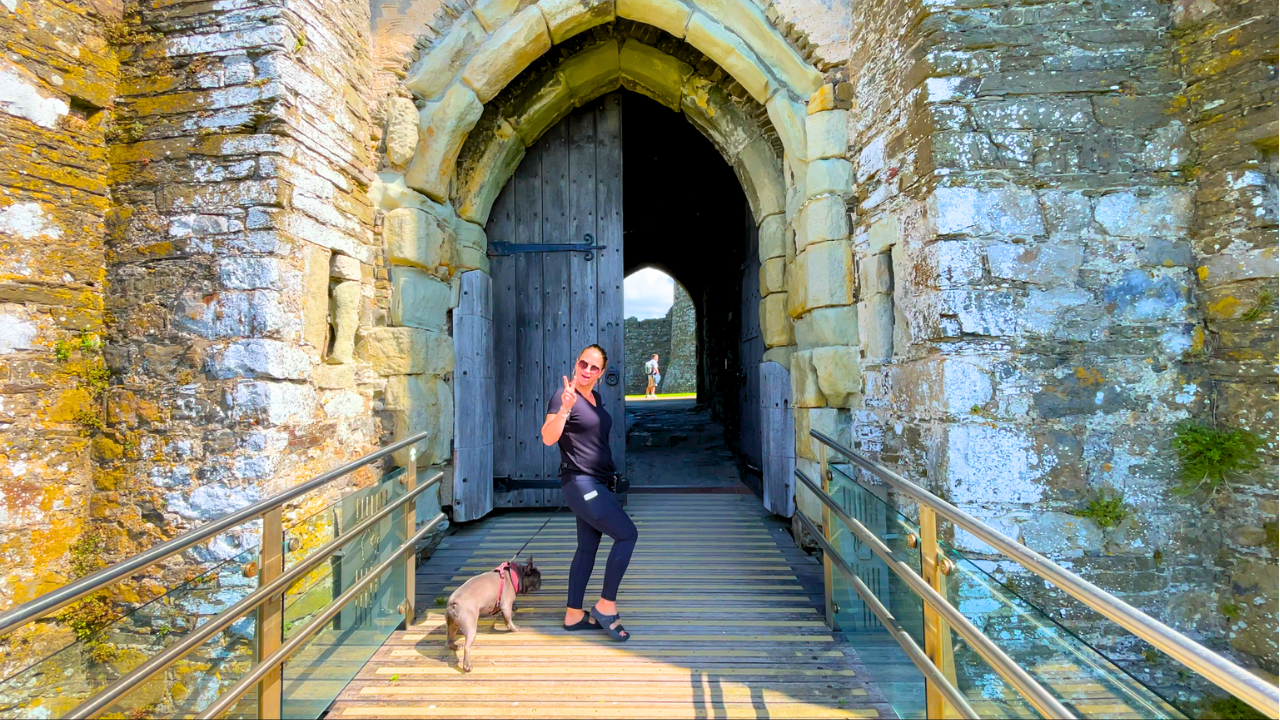
Shopping and Local Amenities
As a small town in Carmarthenshire, Wales, Kidwelly offers several local amenities and shopping options to cater to the needs of residents and visitors. While it may not have large shopping centers like in bigger cities, you can find essential services and stores within the town. Here are some of the shopping and local amenities you can expect in Kidwelly:
- Grocery Stores: Kidwelly has several grocery stores and supermarkets where you can buy groceries and daily essentials.
- Convenience Stores: There are convenience stores in the town that offer a variety of items, including snacks, drinks, and other convenience products.
- Local Shops: Kidwelly is likely to have a mix of local shops and businesses, including butchers, bakeries, pharmacies, and more.
- Restaurants and Cafes: There are restaurants, cafes, and takeaways where you can enjoy local and international cuisine.
- Pubs and Bars: Kidwelly has pubs and bars where you can relax and socialize.
- Post Office: You can find a post office in the town to send and receive mail and use other postal services.
- Banks and ATMs: Kidwelly may have some banking facilities and ATMs for your financial needs.
- Health Services: There should be a medical practice or health centre in the town to provide healthcare services.
Exploring Nearby Attractions
When exploring nearby attractions from Kidwelly, you'll find a range of fascinating places to visit, each offering its own unique charm and experiences. Here are some popular nearby attractions to consider:
- Pembrey Country Park: Located just a few miles west of Kidwelly, Pembrey Country Park is a beautiful coastal park with a long sandy beach, woodland walks, and recreational facilities. It's a great spot for outdoor activities, including cycling, walking, and picnicking.
- Llansteffan Castle: Approximately 5 miles southwest of Kidwelly, Llansteffan Castle is perched on a hill overlooking the Towy Estuary. The castle ruins offer panoramic views of the river and surrounding countryside.
- Laugharne Castle and Dylan Thomas Boathouse: Around 12 miles east of Kidwelly, Laugharne is famous for its connections to the poet Dylan Thomas. Visit Laugharne Castle, a historic ruin, and the Dylan Thomas Boathouse, where the poet lived and wrote some of his work.
- Carmarthen: As the county town of Carmarthenshire, Carmarthen is approximately 10 miles north of Kidwelly. Explore its historic streets, visit the market, and learn about its rich history.
- National Botanic Garden of Wales: Located about 15 miles northeast of Kidwelly, this stunning garden features a wide variety of plants, themed gardens, and glasshouses.
- Gower Peninsula: The Gower Peninsula, located within driving distance from Kidwelly, is known for its breathtaking coastal landscapes, beautiful beaches, and outdoor activities.
- Swansea:
About 20 miles southwest of Kidwelly, Swansea is a vibrant city with museums, galleries, shops, and restaurants. Don't miss a visit to the Mumbles, a charming seaside area.
Are There Toilets At Kidwelly Castle
Yes, there are toilet facilities available at Kidwelly Castle for visitors' convenience. Once you have purchased a ticket you can enter the castle grounds and there are toilets available there. There are also public toilets in Kidwelly town.
What To Pack for Kidwelly Castle
Where To Stay near Kidwelly Castle
If you're looking to stay near Kidwelly Castle, there are several accommodation options available in the surrounding area. Here are some places where you can find lodging:
- Hotels: There may be hotels located in Kidwelly or nearby towns and villages that offer a range of accommodations, from budget-friendly options to more luxurious stays.
- Bed and Breakfasts (B&Bs): Many B&Bs are situated in the countryside near Kidwelly, providing a cosy and personalized lodging experience.
- Guesthouses and Inns: There are guesthouses and inns in the region that offer comfortable accommodations and a chance to experience local hospitality.
- Self-Catering Cottages: Renting a self-catering cottage or holiday home can be an excellent option for families or larger groups looking for more privacy and flexibility during their stay.
- Campsites: If you prefer camping, there may be campgrounds or caravan parks in the area where you can pitch a tent or park your caravan.
Camping near Kidwelly Castle
There were several campsites and caravan parks available near Kidwelly Castle and the surrounding area. These sites offer camping facilities for tents, caravans, and motorhomes. Here are some options:
- Fforest Fields Caravan & Camping Park: Located about 15 miles north of Kidwelly Castle, Fforest Fields offers a beautiful countryside setting with various camping pitches and facilities.
- Pembrey Country Park: Pembrey, situated about 6 miles west of Kidwelly, has a campsite within the country park where visitors can enjoy camping close to the beach and various outdoor activities.
- Llansteffan Camping and Caravan Site: This site is about 5 miles southwest of Kidwelly Castle, providing camping facilities in a coastal setting near Llansteffan Beach.
- Riverside Caravan & Camping Park: Situated about 8 miles southeast of Kidwelly, this park is located along the River Towy and offers camping and caravan facilities.
- Carmarthen Bay Holiday Park: Around 12 miles east of Kidwelly, this holiday park offers camping and caravan options close to the coast.
Kidwelly Castle TV and Film Location
Kidwelly Castle has been used as a filming location for several TV shows, films, and documentaries due to its historical significance and picturesque architecture. Some of the productions that have been filmed at Kidwelly Castle include:
- "Doctor Who" (TV Series): The episode titled "The Androids of Tara" (1978) featured Kidwelly Castle as a filming location for scenes set on the fictional planet Tara.
- "Ivanhoe" (Film - 1982): Kidwelly Castle was used as a filming location for this historical adventure film based on Sir Walter Scott's novel.
- "The Lion in Winter" (Film - 2003): Kidwelly Castle was featured in this TV film adaptation of James Goldman's play about the Plantagenet family.
- "Merlin" (TV Series): Kidwelly Castle was used as a filming location for this fantasy-adventure TV series, which aired from 2008 to 2012.
- "Monty Python and the Holy Grail" (Film - 1975): Was used as a filming location for this classic comedy film.
Share
Checkout our YouTube Vlogs
Follow Us On YouTube 👉🏼
